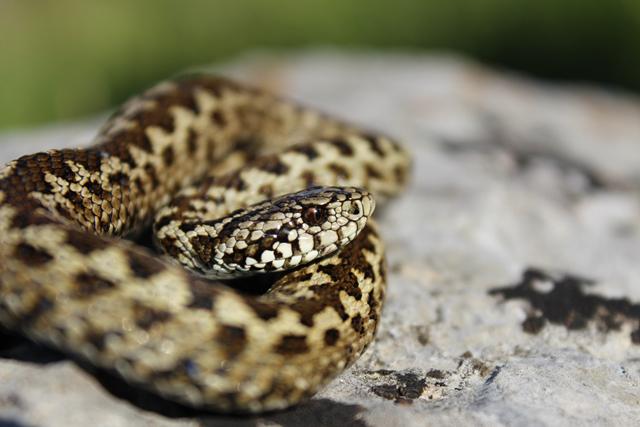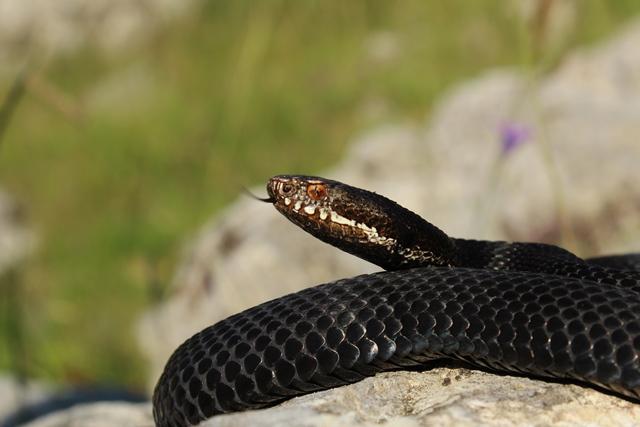Ivona Burić
The aims of the project are:
• Start of Karst Viper monitoring programme in Bosnia and Herzegovina
• Collect biological, morphological and meristic data for Karst viper
• Check new possible mountain localities for precise distribution of Karst viper
• Raise public awareness (education)

Female karst viper.
Karst Viper (Vipera ursinii macrops) is endemic snake subspecies that inhabits high mountain grasslands in Balkans. It is part of Vipera ursinii complex. The species Vipera ursinii is vulnerable because the population trend of the species is decreasing and it has very fragmented distribution. If we just look the Vipera ursinii macrops subspecies in the Balkan area we can say that the subspecies is most common in Bosnia and Herzegovina but recent study show that the V.ursinii macrops is divided in two clades so the area of distribution is smaller than it was thought (Ferchaud et al., 2012). There are 10 confirmed localities for Karst viper in Bosnia and Herzegovina. We will investigate 8 new possible mountain localities that ecological niche model indicate like areas where vipers could be found: Maglić, Prenj, Ujilica, Čabulja, Bjelašnica (near Trebinje), Sitnica, Golija and Njegoš. This data will help us to precisely determine distribution area of the subspecies/clades.

Melanistic (black) adder.
With this project we will start a long term monitoring of Vipera ursinii macrops on Zelengora Mountain. Monitoring will be done in three occasions depending on the weather and climate conditions in 2015 and we will use capture-mark-recapture method. This monitoring programme will involve whole regional and Bosnia and Herzegovina team that works on this species. On every locality we will take different data: distribution (geographic coordinates, UTM coordinates, altitude, vegetation type, habitat and microhabitat types, exposition, weather conditions, time of day, air and ground temperature), biological (sex, reproductive status (for females), behaviour, food preferences, body size, body weight, cloaca temperature), morphological (body, head and tail measures) and meristic (head, body and tail scales).
We will raise public awareness with posters that we will distribute to schools, NGO´s, mountaineering societies etc., with lectures about project in different cities in the country and through media articles on social networks and web pages. In the Balkans there is lack of detailed information about the distribution of the Karst viper and there are number of uncertainties that can be resolved only with further surveys. The threats, conservation status and population trend of Karst viper in Bosnia and Herzegovina is unknown. Through this research we will gather a lot of information that will be important to assess the species status, population trend and threats.